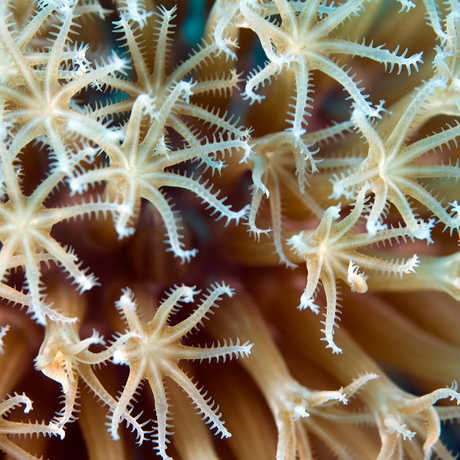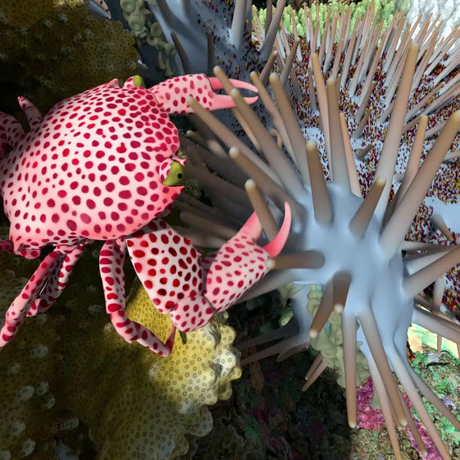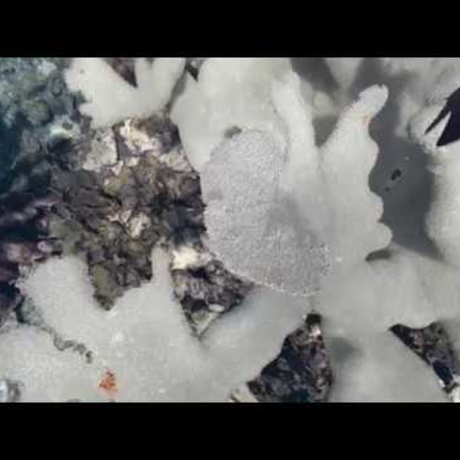Be dazzled by the brilliant colors of thousands of tropical fish swimming across your screen.
Would you describe a coral as predator, prey, or both?
About the Video Clip
Duration: 3 minutes
Grade Level: Appropriate for all ages; content connects to NGSS standards for grades 5 and above
Shrink to the size of a coral polyp to see how corals acquire energy. Like all animals, coral polyps eat. They capture prey using microscopic hooks released from their tentacles. But most of the coral's energy comes from algae known as zooxanthellae which reside in the polyp's tissue, converting sunlight into energy-rich sugars that corals can absorb for fuel.
Lesson: Build a Coral Polyp

What's going on inside of a coral polyp?
In this lesson plan for grades 3-8, students will build a simple representation of a coral polyp to learn the anatomy of coral and to be able to explain whether corals are animals, plants, or both.
Photo credit: Marc AuMarc
Interactive: Coral Polyp Anatomy

Take a closer look at the anatomy of a coral polyp by exploring this interactive animation of a polyp in the wild. Point and click at the different anatomical structures of a coral polyp for more information on its functionality.
What do you notice about the anatomy of a coral polyp? What do you wonder?
Connections to the Next Generation Science Standards
While this video doesn't necessarily cover the following standards in depth, it is a compelling resource you can use to supplement your curriculum that does.
Disciplinary Core Ideas
- 5-LS2-1 How does matter and energy cycle through coral reef ecosystems?
- MS-LS1-6 What evidence from coral reef ecosystems showcases the role of photosynthesis in the cycling of matter and flow of energy into and out of organisms?
- MS-LS2-3 Considering the relationship between coral cells and zooxanthellae, how can you explain the pattern of interaction among these organisms? How do matter and energy move through a coral reef ecosystem, or through the system of a single coral reef animal?


